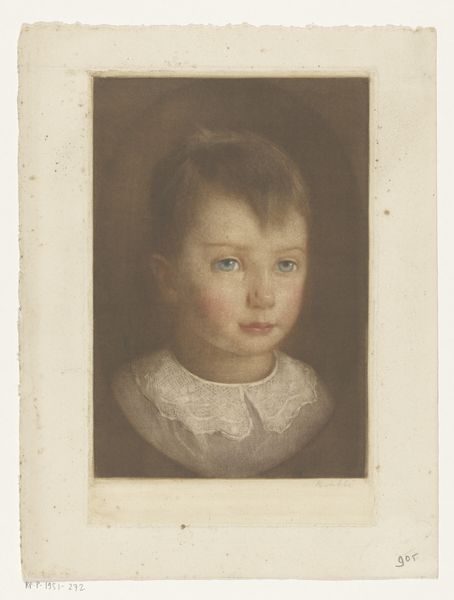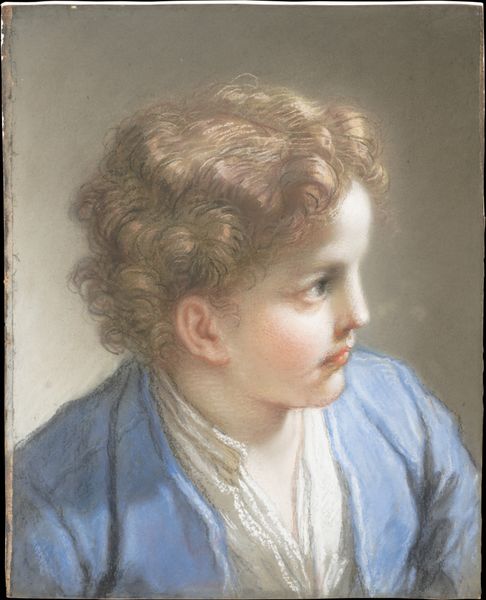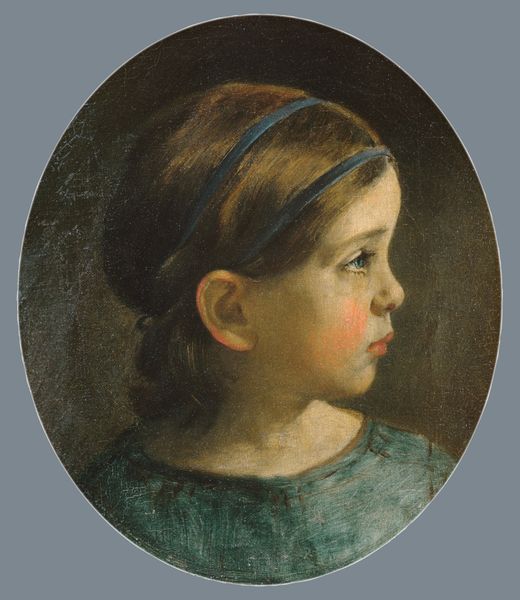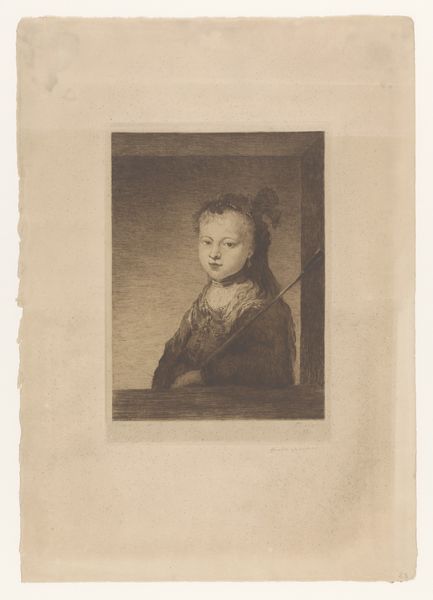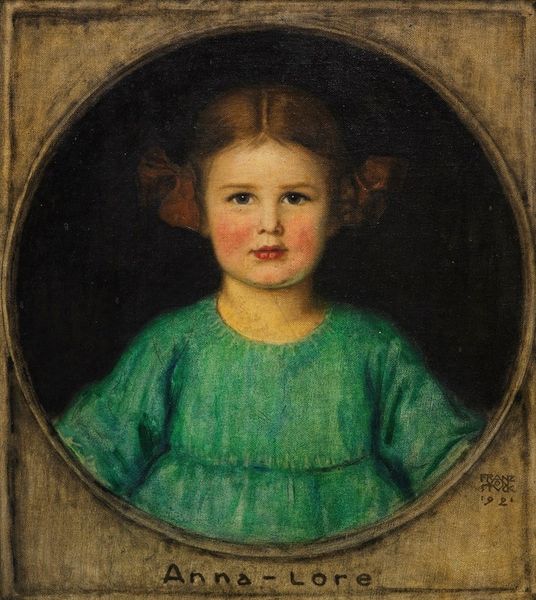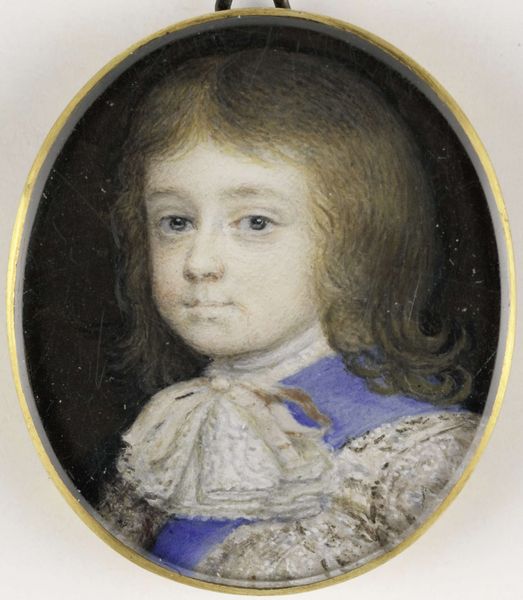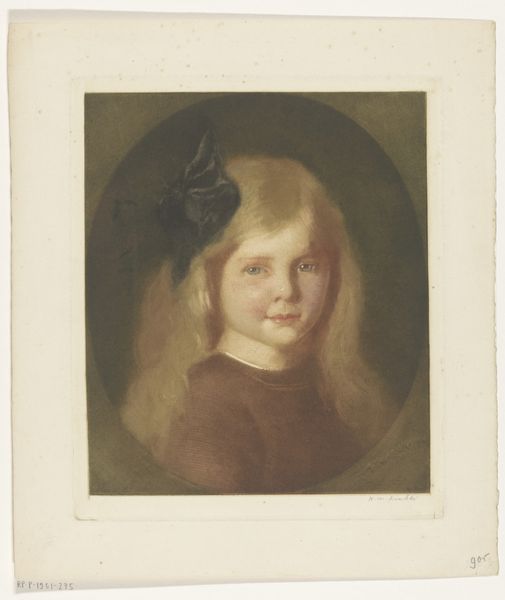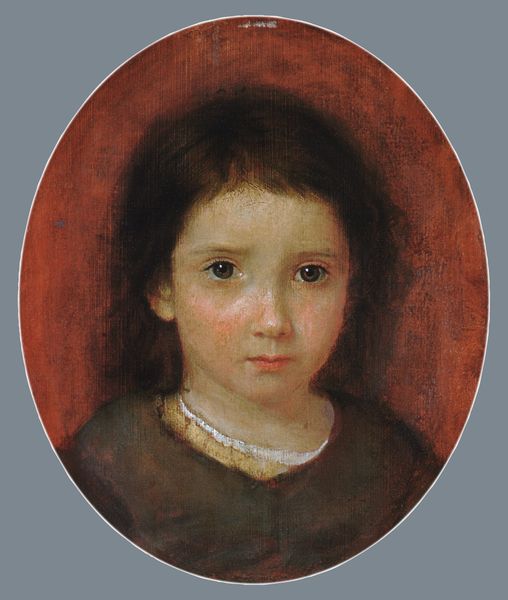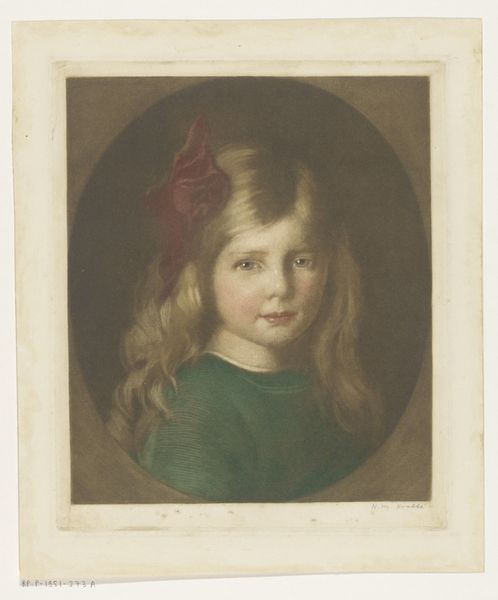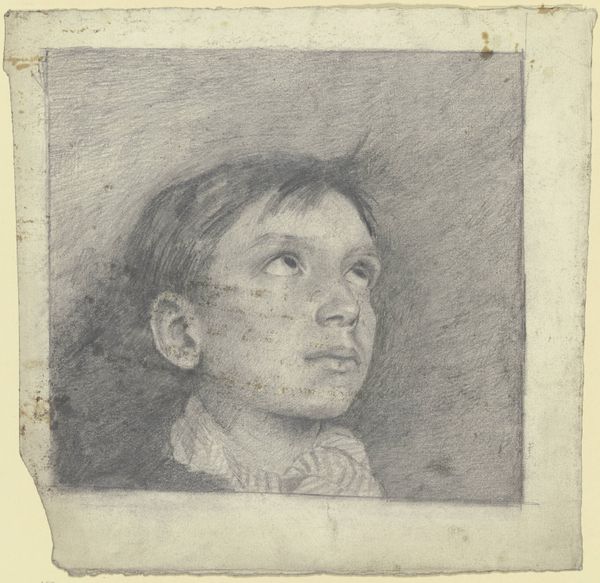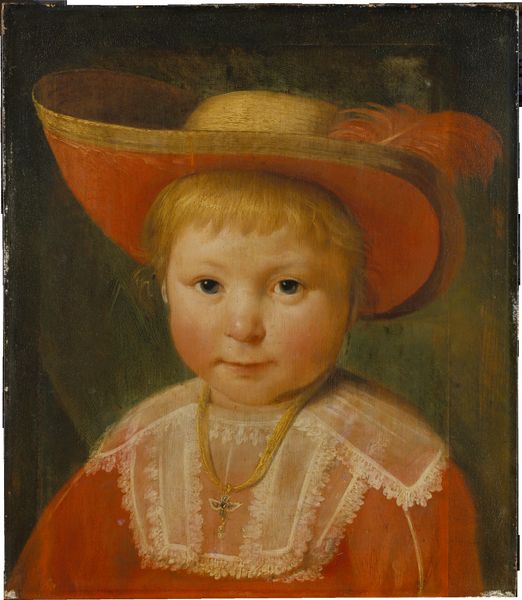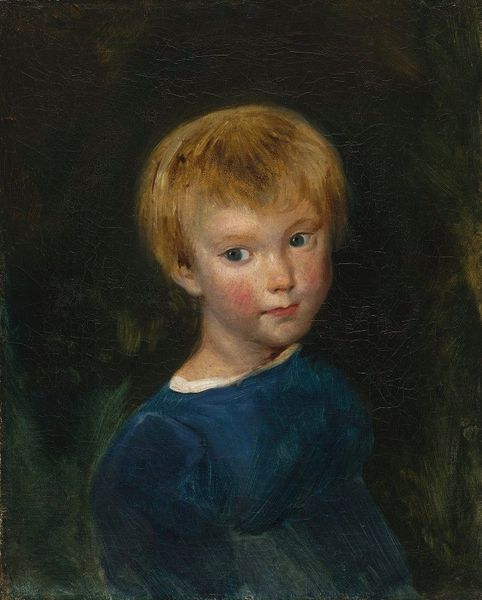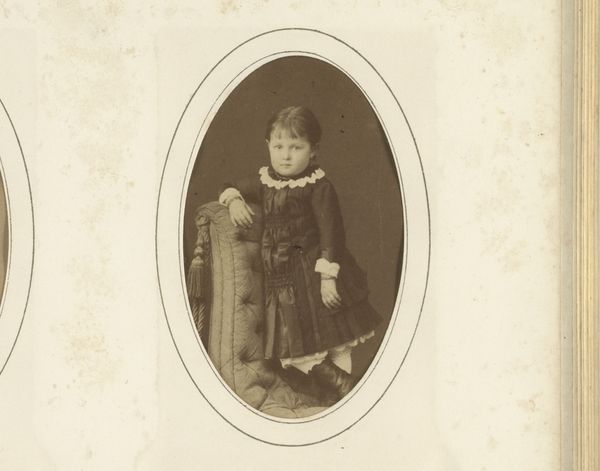
painting, oil-paint
#
portrait
#
painting
#
oil-paint
#
realism
Copyright: Public domain
Curator: Here we see Nikolaos Gyzis’s 1880 oil painting, “The Artist's Daughter." Editor: Immediately, I notice how softly rendered everything is. There’s an almost melancholic feel to it, despite the child’s captivating expression. The subdued colors, the way the light falls... it all points towards a moment of quiet observation. Curator: Gyzis painted this portrait in Munich, where he established himself within the artistic circles and adhered to the principles of realism. It offers us an intimate glimpse into his family life, a departure from his more overtly historical or genre scenes. What do you make of that for the work's cultural value? Editor: Knowing the work was rendered in oil shifts my perspective, especially given the visible brushstrokes. Gyzis is making deliberate choices about texture and depth with a limited palette. How was the paint handled to achieve this softened, almost dreamy quality, rather than sharper edges? I would really like to explore how a viewer from the 1880's may have perceived Gyzis's technique, particularly within a realist context. Curator: Well, realism as a movement emphasized observable facts as subjects worthy of artwork. Portraits, including child portraits, were gaining popularity at this period as both social markers, and symbols of bourgeois family life. Commissioning such a piece signals social status, while creating one as an artist marks artistic and familial pride. Editor: Definitely. There's a particular social relationship made tangible through the labour involved. Oil paint itself, being such a versatile yet costly medium, represents resources and commitment. I can’t help but wonder what material constraints Gyzis faced or what kinds of pigments he may have chosen. Was it locally sourced? Mass produced? These considerations open new ways of thinking about it. Curator: Absolutely. Considering that the artist occupied an established academic role by the time he made this painting, it reveals that social standing gave him the latitude to represent familial subjects at a time when debates raged about whose stories or faces had value. Editor: Seeing Gyzis’ painting with an attention to his resources enriches my viewing of his family ties—ties embedded materially as well as symbolically in his chosen medium and methodology. Curator: Indeed, analyzing the painting in its historical context illuminates both the personal and public dimensions. Editor: Considering that materiality encourages new kinds of stories, what further analyses might you find fruitful?
Comments
No comments
Be the first to comment and join the conversation on the ultimate creative platform.
